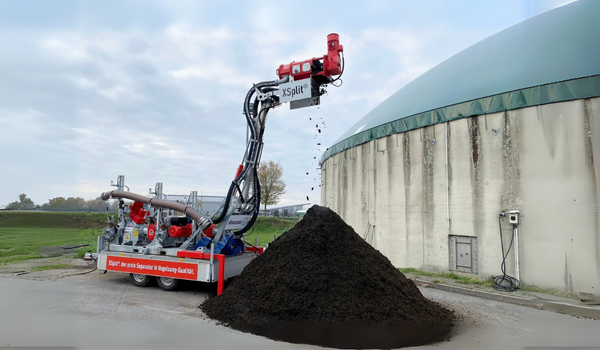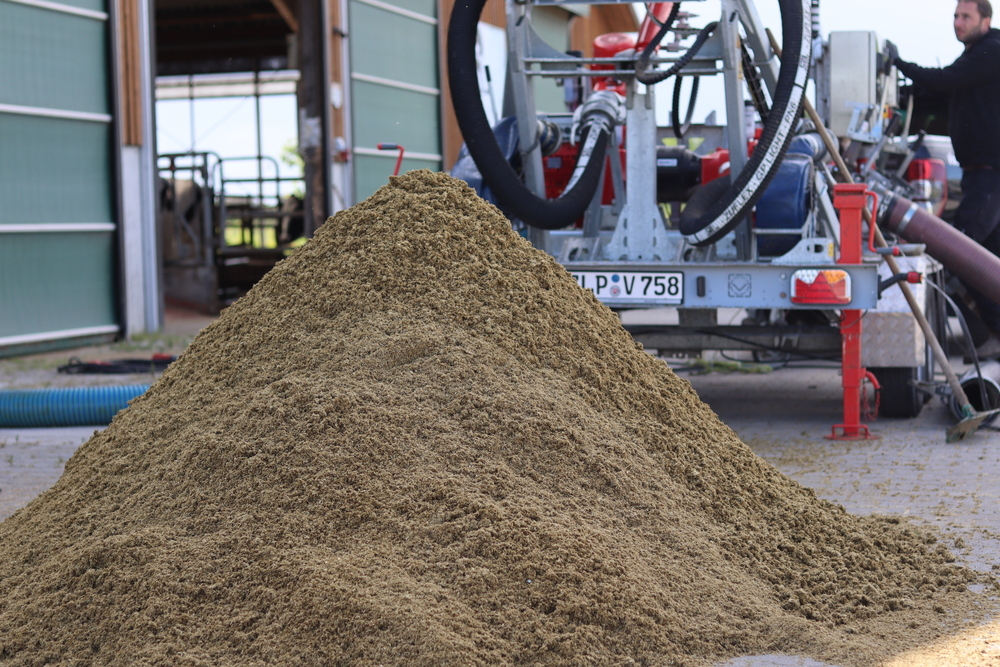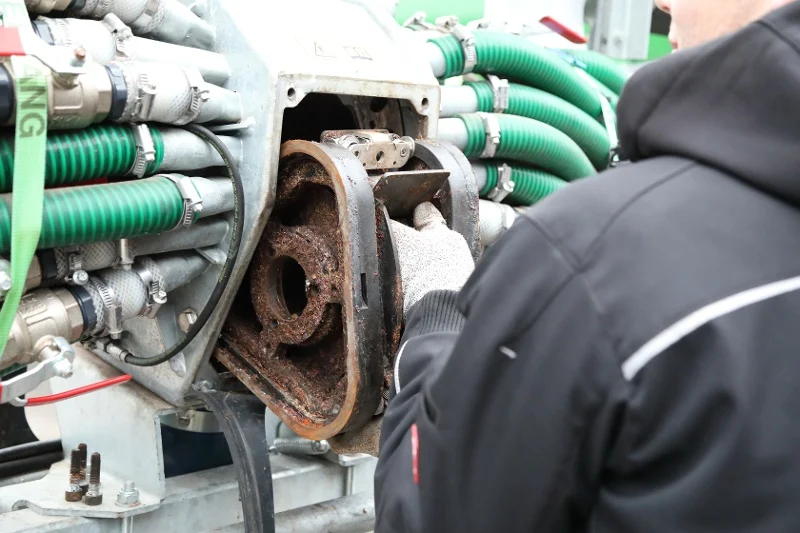More efficient biogas production thanks to separation

Biogas plant operators face increasing economic and technical pressures: rising energy costs, stricter regulations for storage and fertiliser use, and the growing demand for operational efficiency. One often underestimated lever for optimisation is the separation of digestate – especially with a powerful screw press separator. This technology helps reduce operating costs, improve gas production, and ensure regulatory compliance more easily.
Reducing digestate storage costs

One of the key advantages of separation is the reduction in required storage volume. When digestate is separated into solid and liquid phases, the volume of the liquid fraction is reduced. As a result, the need for expensive storage tanks is minimised. The solid fraction, on the other hand, can be stored more easily and cost-effectively – for example, on a silage pad. This leads to substantial savings in storage infrastructure and costs.
More efficient use as fertiliser

Separation also proves beneficial when it comes to digestate application. The liquid phase contains fewer fibres, making it significantly more fluid and easier to apply with modern spreading technology, such as trailing shoe or dribble bar systems. This reduces plant contamination and minimises the risk of scorching. At the same time, the solid fraction offers greater flexibility: it can be temporarily stored and thanks to its high organic content, it serves as an effective long-term fertiliser and helps improve soil structure. Moreover, the solids are cheaper to transport, which is especially advantageous in inter-farm utilisation.

Tailored Process Optimisation
Another important benefit: separation can help address specific process challenges in the biogas plant – for instance, if the retention time is too short. When solids are discharged from the fermenter too early, their full energy potential remains unused, resulting in reduced gas yield. This can be mitigated through separation: the suspension is separated, the liquid fraction removed, and the solid fraction returned to the fermenter. This extends the retention time of the solids, maximises their energy yield, and increases the specific gas output. As a result, the overall efficiency of the biogas production process improves.
Finally, separation can also help when the fermenter suspension becomes too viscous – a common issue that makes mixing difficult, increases the energy demand of mixers, and negatively affects plant performance. A thicker suspension typically requires longer mixing times, which further drives up internal power consumption and operating costs. A screw press separator efficiently removes solids, while the more fluid liquid fraction is returned to the fermenter. The lower viscosity reduces energy demand for pumps and mixers, and the run times of the mixing equipment can be shortened. This not only lowers power consumption but also reduces wear – cutting maintenance and overall operating costs.

Conclusion: A screw press separator offers numerous advantages for biogas plant operators – from reduced storage and spreading costs to more efficient fertiliser use, increased gas yield, and lower operating expenses.
More information about the XSplit

